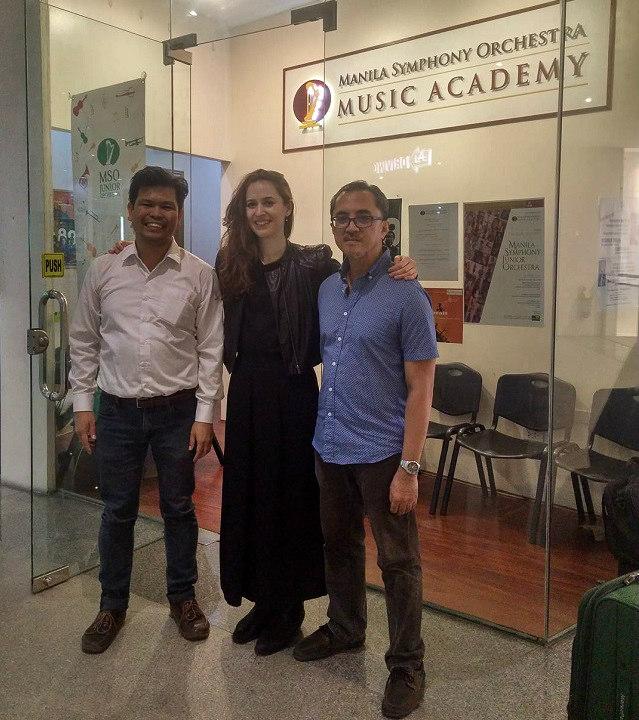Tali Rubinstein: A bridge between Baroque, bebop and beyond

Master classes can be funny things. First of all, personally, this writer has never quite been sure of who the master is in such a setting—the one taking the class or the one giving it? Is a master class a class given to folk who are already masters themselves, or a class taught by a consummate master?
It was with such a trivial concern that this writer attended a master class given by Israeli recorder player Tali Rubinstein on November 8 at the Manila Symphony Orchestra's music studio in Glorietta 5.
That the question remained undiscussed was part of what made this particular master class so interesting.
Rubinstein spent about as much time asking each participant for their input as she did providing her own take. Because of this, this participant, as well as likely everyone in attendance, felt equally validated as an artist.
Given the caliber of musician in attendance—MSO oboe player Jeffrey Solares, UP Jazz royalty Neil Robles, not to mention Tali’s accompanist, guitarist Gerry Duran—letting everyone participate in a freewheeling discussion-cum-jam session proved more than a little edifying.
Rubinstein started things off by introducing herself and relating her personal musical history, then asked each of us to do the same.
So we each introduced ourselves to the group and stated our particular chosen instrument. At that point, Rubinstein noted that unlike most people who started off with the recorder then shifted to a more “serious” instrument, she just kept on going with the recorder, mainly because she was so engrossed having fun making music on the recorder that it just never occurred to her to shift.
She then went on to discuss the various quirks of the recorder—its idiosyncratic intonation, dynamics and timbre—demonstrating each of her points on various types: bass, tenor, alto, soprano, sopranino.
Then she treated us to an impromptu take on “Bye Bye Blackbird” before essaying a comprehensive rundown of jazz history from Louis Armstrong-type swing to straight-ahead bebop before foreshadowing the shape of jazz to come with more disjointed, angular fare on a jam session with oboist Solares on “Girl From Ipanema.”
Solares was a tad shy about improvising, as his métier is really formal, “legal” classical-type playing, but mistress Rubinstein coaxed him out of his shell and egged him on with good-natured whoops and comradely grunts and yeehaws. In doing so, Tali evinced the true spirit of music as a communal, collegial pursuit.

To then encourage everyone to jam, Tali related how she herself, at the start of her own career, felt daunted at the prospect of improvising, creating music out of whole cloth in the moment.
Having sufficiently bolstered the room’s courage, she then brought up two horn players—a clarinet player and a French horn player, both Pinoy—to jam on an instant composition in E which they extemporaneously composed on the spot with Duran.
That moment was wonderful, indeed, magical as the music unfolded in twisting contours both surprising and inevitable. To intentionally compose a tune that goes from E minor to Db major to E major with nary a bum note, discordant clash, or moment’s hesitation would have been feat enough. The magic of the moment was such that the musicians did all that unbidden, unprompted and unscripted. Pure wizardry.
As alluded earlier, Tali did the music and the musicians the truest service by trusting each member and each moment to unfold as they would.
This writer contends that that is what makes a master class a master class: a master exemplifies mastery by trusting music and musician alike, thus bringing out the mastery latent in all.
The moral? In trusting surrender is mastery found. Truth be told, however, I’m not quite sure if that lesson was gleaned from Tali Rubenstein’s master class, or from having watched Doctor Strange immediately after. — BM, GMA News





